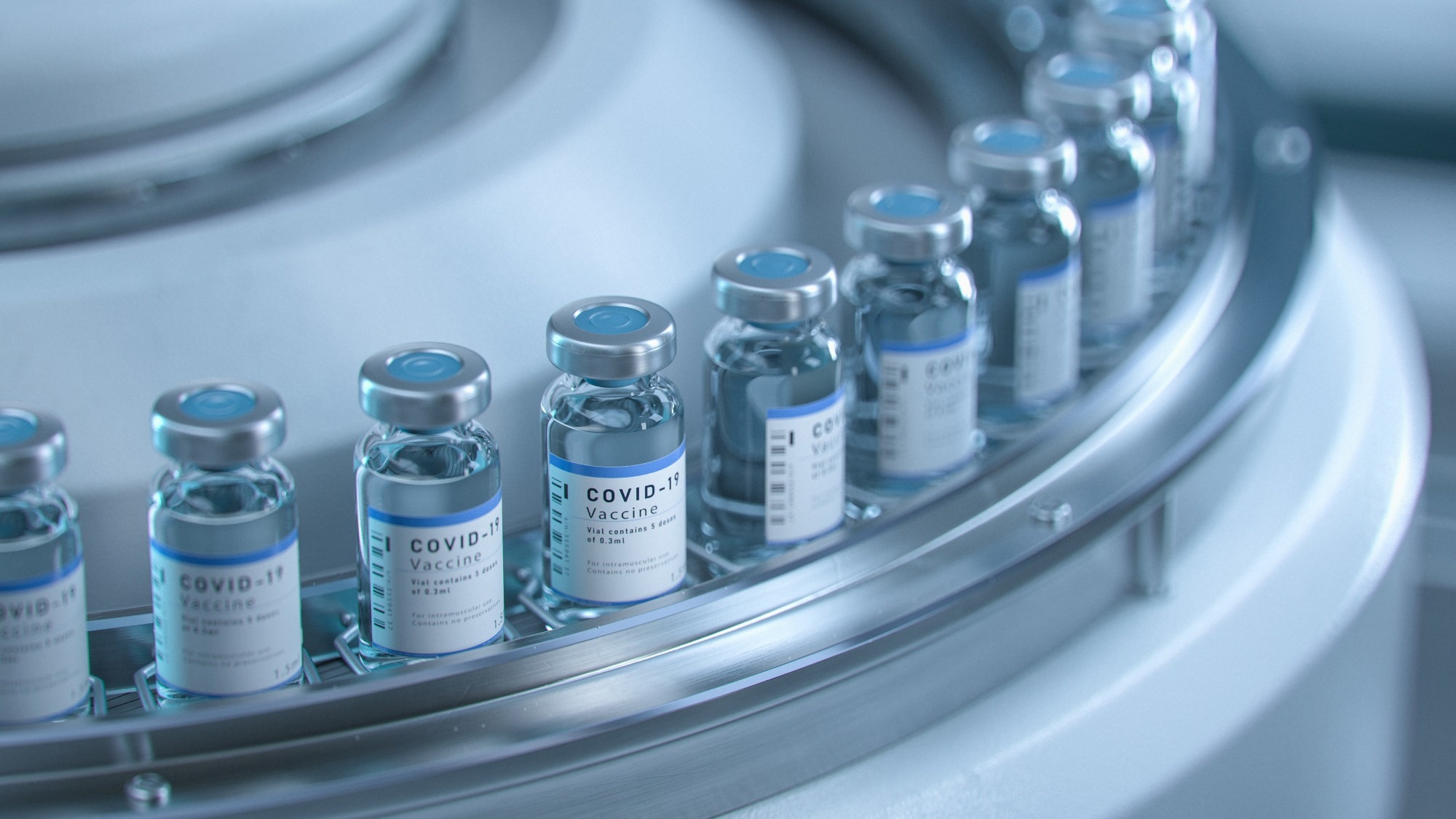Reviewed by Lauren HardakerOct 29 2025
A group of researchers from Purdue University and Merck & Co. Inc. recently unveiled a novel analytical tool that may assist pharmaceutical companies in enhancing vaccine production through expedited monitoring and analysis. They presented their tool in Spectrochimica Acta Part A: Molecular and Biomolecular Spectroscopy.
 Image credit: Gorodenkoff/Shutterstock.com
Image credit: Gorodenkoff/Shutterstock.com
The emergence of the COVID-19 pandemic emphasized the critical need for fast, efficient development, manufacturing, and distribution of new vaccines on a large scale.
The research team confirmed the effectiveness of the patent-pending tool through tests that accurately assessed the quality and quantity of continuously flowing viral particles.
The current methods are more time-consuming and offline. Doing it online will save time and money in vaccine production.
Shreya Athalye, Graduate Student, Agricultural and Biological Engineering, Purdue University
Traditionally, samples must be removed from the production line and transferred to an instrument for testing. However, the new quality-control tool can operate on the production line and produce results in 30 seconds or less.
The research integrated the knowledge of experts in agricultural and biological engineering, biomedical engineering, computer science, mechanical engineering, and materials science engineering. To safeguard intellectual property, a patent application has been submitted.
The co-authors from Merck supplied the samples and confirmed the study's alignment with industrial processes.
The researchers developed their new tool utilizing Raman spectroscopy, a technique that uses a laser to capture the molecular fingerprint of a sample.
It’s nondestructive in nature, and its ability to work with samples that have water makes it ideal for biological samples such as vaccines.
Shreya Athalye, Graduate Student, Agricultural and Biological Engineering, Purdue University
In 2022, Athalye collaborated on a study that used Raman spectroscopy and machine learning techniques to quantify the concentration of viral particles in samples that included measles, mumps, and various other viruses.
The recent study showcased the tool's capability in identifying particles of the human cytomegalovirus (CMV), which belongs to the herpes virus family. Researchers are investigating virus-like particles as a potential approach for developing a CMV vaccine. CMV primarily affects individuals with weakened immune systems, such as transplant recipients.
“CMV structure and mode of action make the vaccine development challenging, but many investigational vaccines are being evaluated in clinical trials,” noted Athalye.
“Process analytical technology, or PAT, holds the potential to enable rapid release of biologics. We have worked on this collaborative project with the Ardekani lab in mechanical engineering and with the group at Merck to enable PAT using Raman spectroscopy. By demonstrating that we’re able to characterize CMV at industrially relevant concentrations and flow rates, we support easier adoption of this approach in biomanufacturing,” said Verma.
The research team has no knowledge of any prior reports concerning a Raman spectroscopy-based instrument of this kind for the detection of CMV particles. This particular instrument, referred to as process analytical technology, enhances quality control by enabling continuous monitoring of the production process.
“The point is that we want to analyze the particle as it is being produced,” said Athalye.
The technology is adaptable enough to be used in producing various types of vaccines.
In a study conducted in 2020, Verma and his team applied Raman spectroscopy to pinpoint bacterial and fungal contaminants that pose a risk to the pharmaceutical sector. During this project, the team created an assay capable of detecting bacteria that are 10 times larger than viruses, all while under static conditions.
“In this study, we are moving forward with a system that allows monitoring in continuous flow,” said Athalye.
In 2020, Verma and colleagues evaluated the effect of PAT on the production of antibodies that function similarly to naturally occurring human antibodies.
The researchers examined the new system across different flow rates, including both industrial production and static conditions.
We wanted to make sure that we were developing a tool that can be transferred to industrial operating conditions.
Shreya Athalye, Graduate Student, Agricultural and Biological Engineering, Purdue University
This is particularly relevant to continuous manufacturing, where vaccines and other products are produced continuously without interruption from the production line.
“Continuous manufacturing is the future. It is environmentally friendly, and it saves money and resources as well. The critical component of continuous manufacturing is developing a robust quality-control tool, or more specifically, a process analytical tool. That’s what drives me to do this research,” said Athalye.
In upcoming research, the team will showcase the application of Raman spectroscopy for various viruses, vaccines, and virus-like particles.
“We will also be demonstrating the potential of probe-based methods in delivering such results so that they could be integrated into continuous manufacturing unit operations,” said Verma.
Source:
Journal reference:
Athalye, S. M., et al. (2025). Real-time monitoring of attenuated cytomegalovirus using Raman spectroscopy allows non-destructive characterization during flow. Spectrochimica Acta Part A Molecular and Biomolecular Spectroscopy. doi.org/10.1016/j.saa.2025.126761.